Recently, many old and impurity materials containing Rhenium and Tungsten emerged in the market, significantly impacting the gold recycling industry. Those customers who did not use the spectrometer analyzer suffered heavy losses in particular. We analyze the characteristics of the Rhenium-containing samples according to some old and impurity materials commonly found in the market and give the methods to tackle the problem individually.
1.Typical impurity materials doped with Rhenium and Tungsten, black dots on the surface can be seen by eyes.
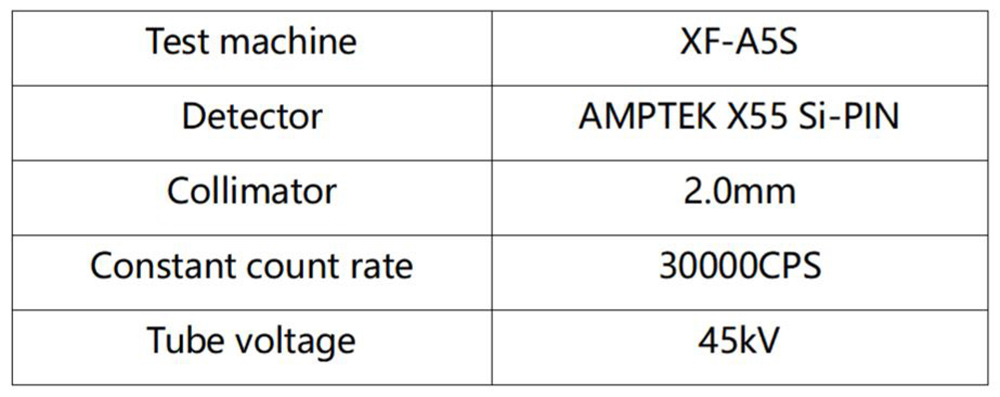
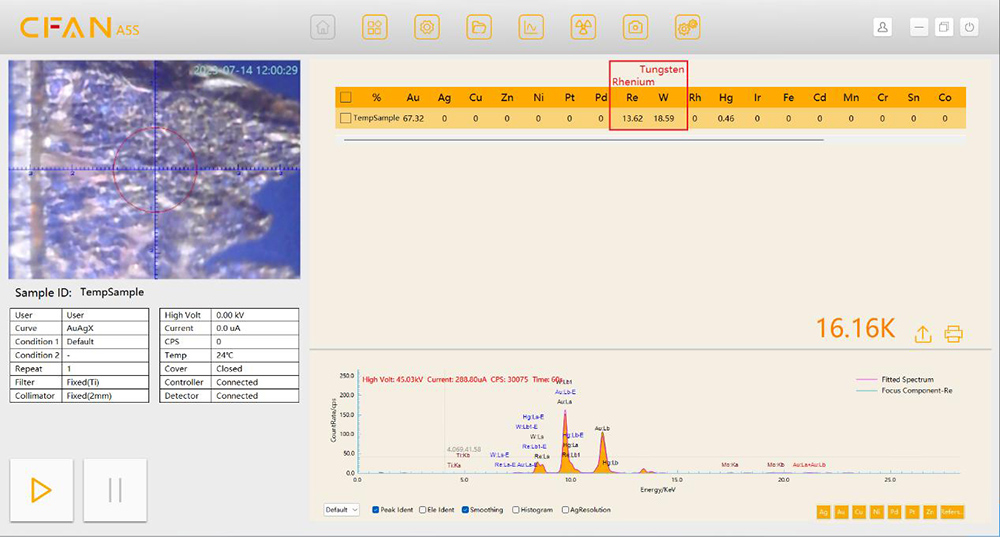
Like these impurity materials, the users of recycling business can see the problem at a glance, because the black dots are dense. The characteristic peaks of Re and W can also be clearly seen on the spectrum shape detected by the spectrometer, and their detection content is relatively high.
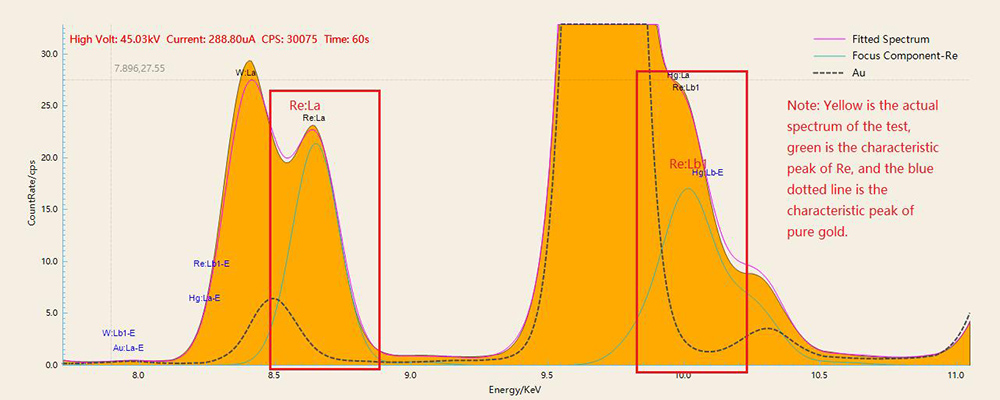
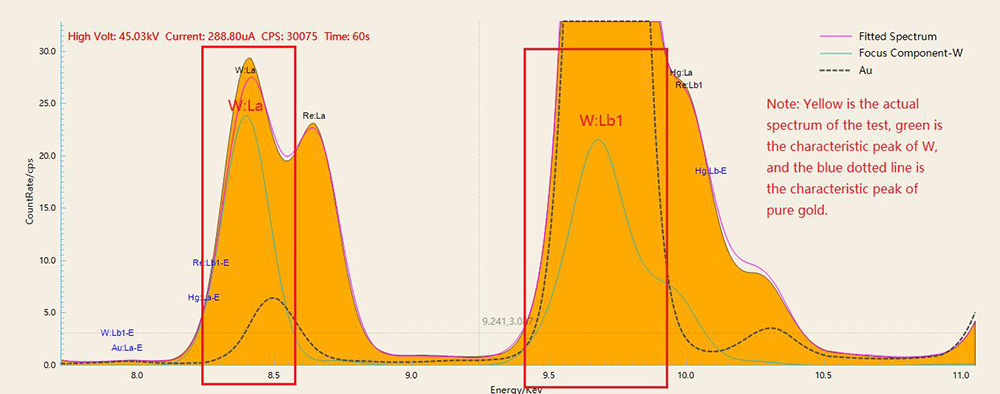
Users can quickly spot problems with this impurity material, even if they haven't melted it down or cut it for testing.
2. The surface did not appear to have any black dots, and the spectrometer did not detect any Re or W, but small amounts of Re and Tungsten were found when it was cut open and tested.
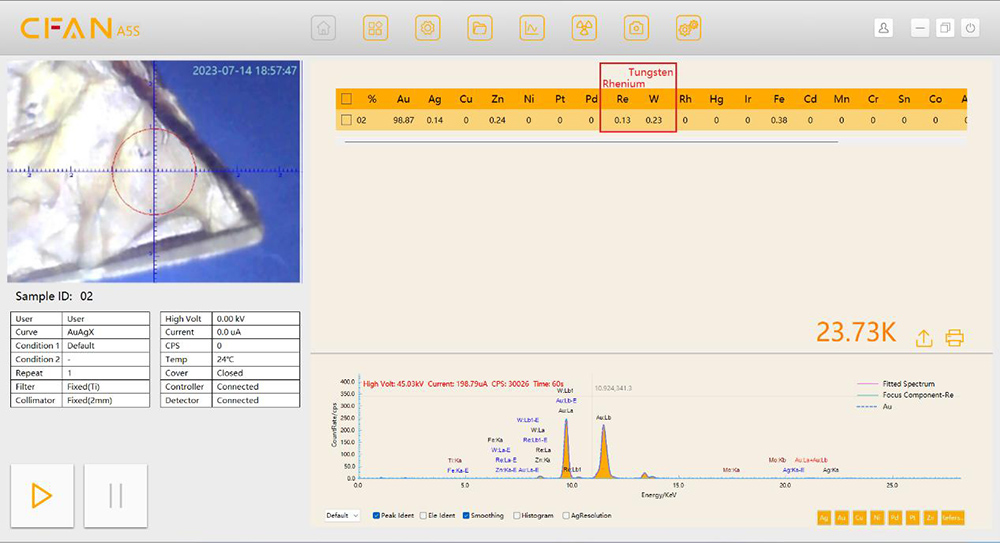
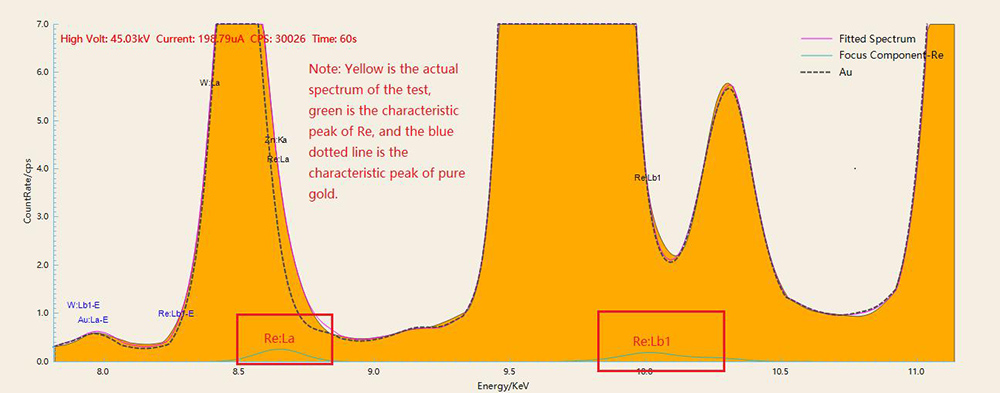
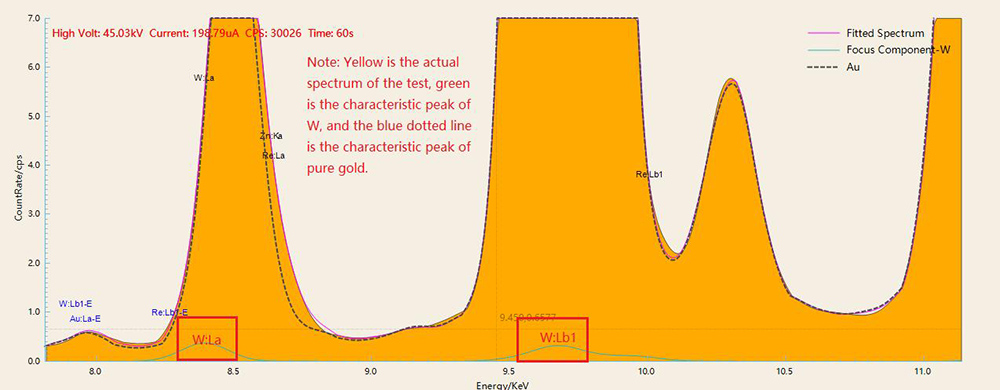
For this kind of impurity material, less doped Re and W, it is not enough to test the surface, because the X-ray spectrum’s penetration depth is about 10 microns (45 kV); so it must be cut and tested to make sure it qualified.
3. Some recycled old materials, even if melted into a golden block, there is no visible black spot on the surface, and rhenium tungsten is still not detected, but rhenium can still be detected in some positions of the golden block with a small collimator
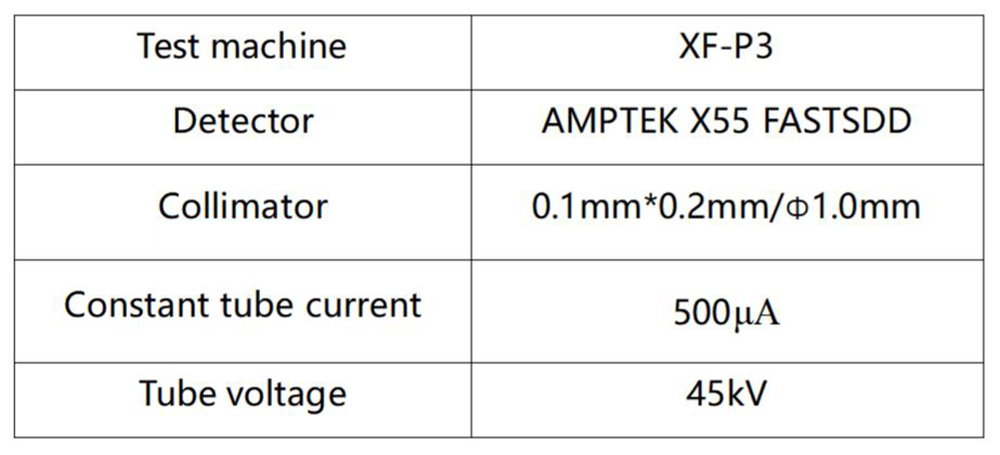
a.No detection of Re when using a 0.1mm*0.2mm collimator test 5 points in a circle at the top, bottom, left, right, and center. See the figure below.
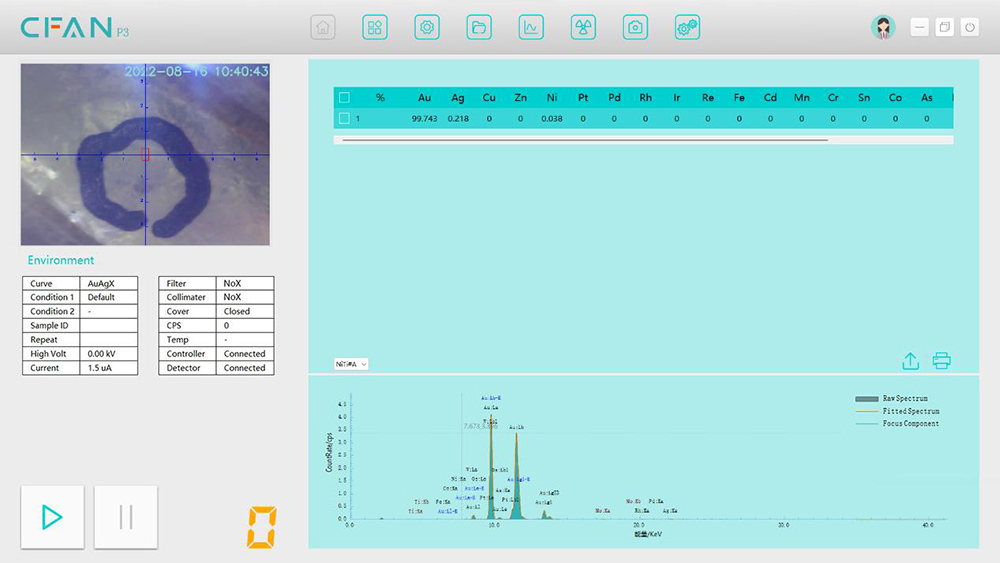
Fig. a-1
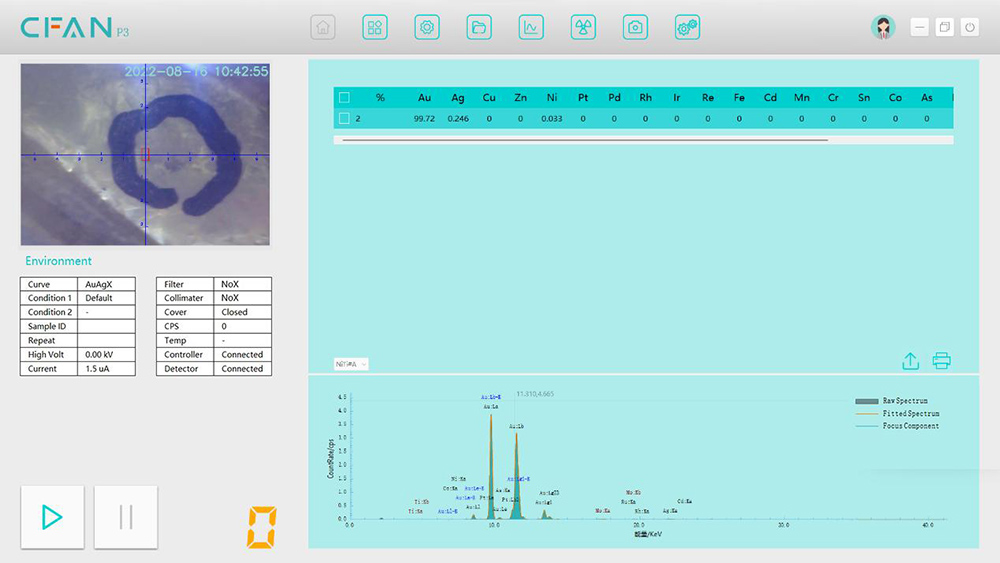
Fig. a-2
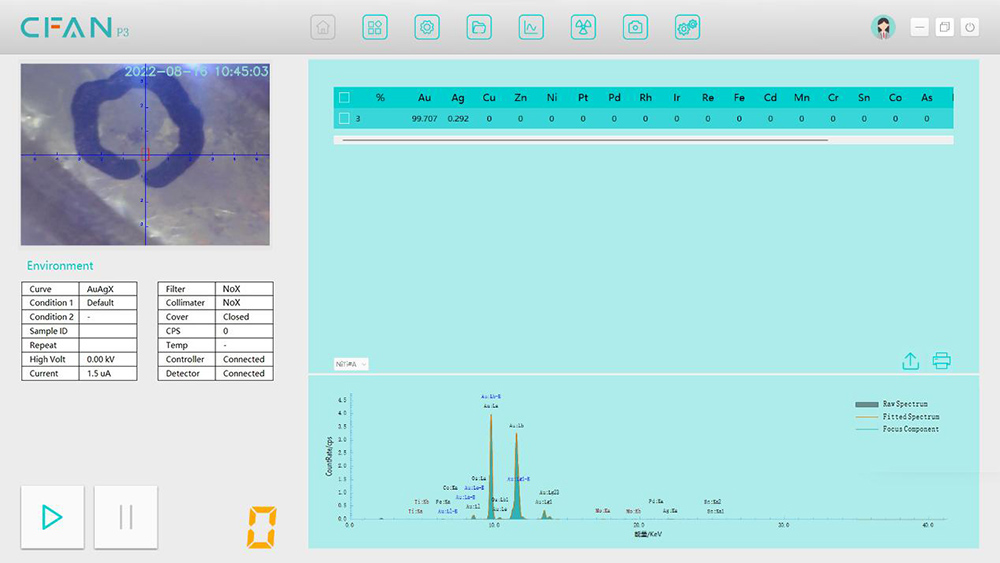
Fig. a-3
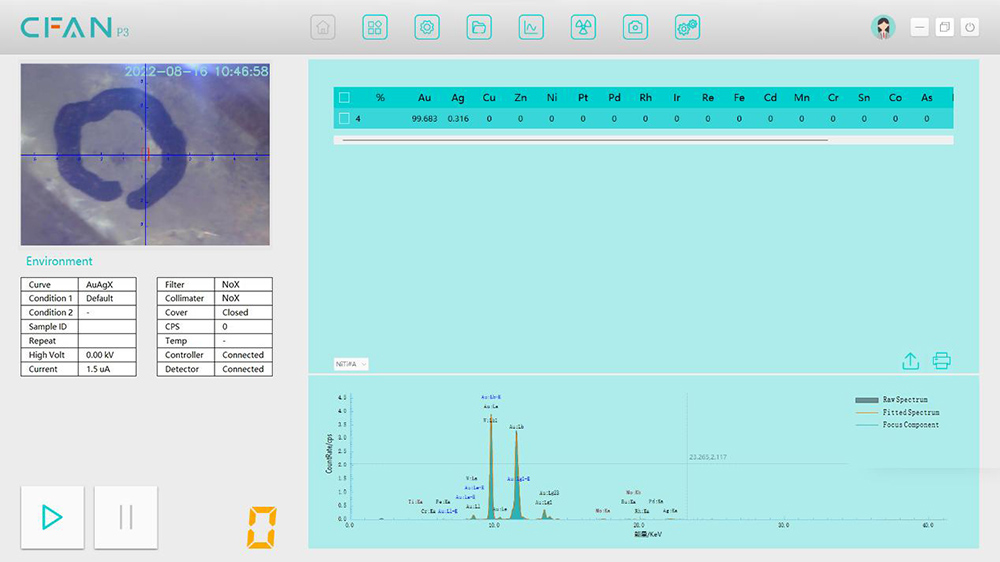
Fig. a-4
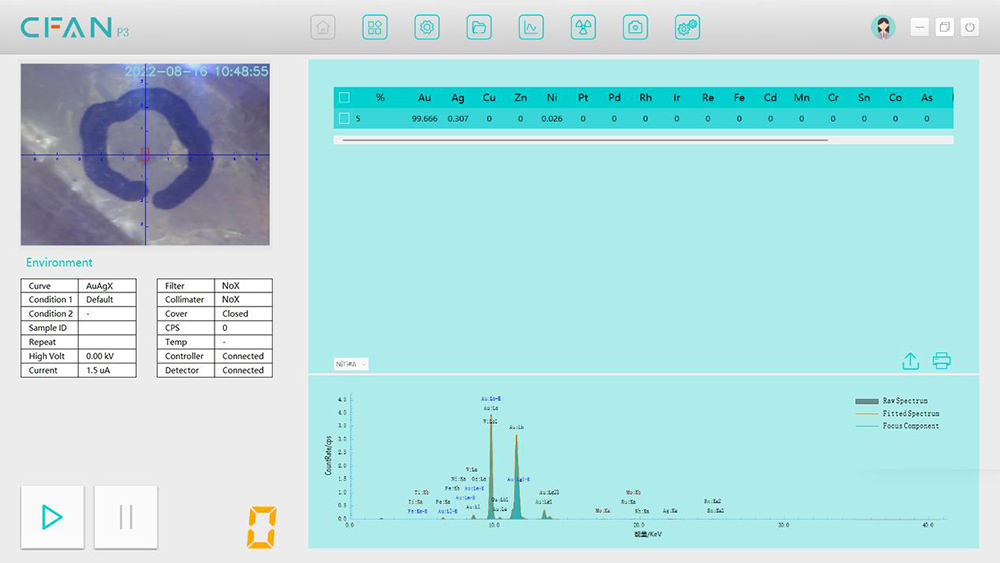
Fig. a-5
b. The 4.26% Re can be detected when using the 0.1mm*0.2mm collimator to test the point in the lower left corner of the circle, as shown below.
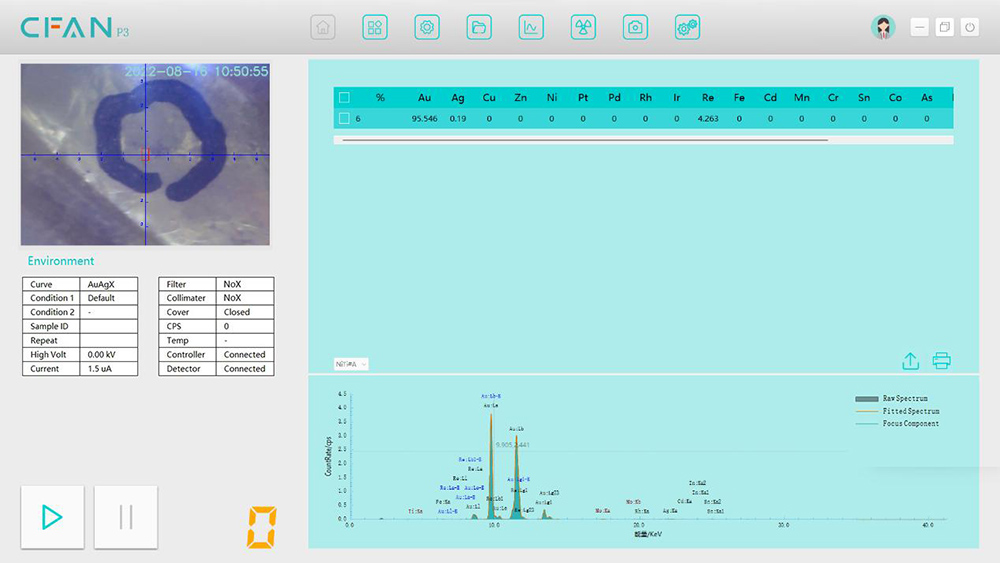
c.Only 0.75% Re could be detected at the point in the lower left corner of the circle when using the ø1.0mm collimator
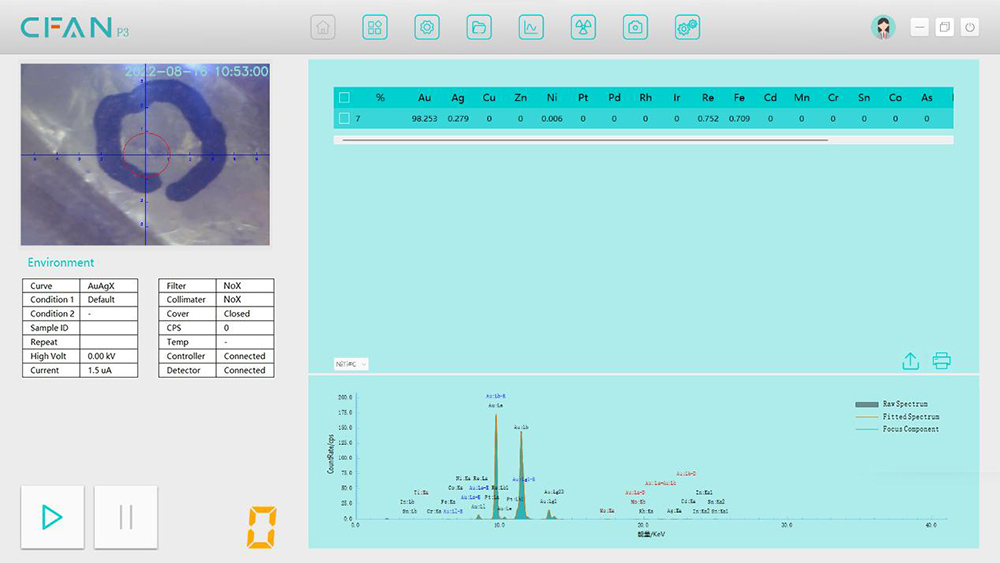
From the above tests, we found that the use of a smaller collimator can accurately locate the rhenium point in the sample, as shown in Figure b, while in the same circle, the other five points as shown in Figure a, no rhenium was detected, indicating that on the surface of the sample, the distribution of rhenium is very rare, and the point is very small, this kind of missed detection is possible. But then again, the amount of rhenium we detected is actually not very meaningful, because it only represents the amount of rhenium in the area you are testing, not the amount of rhenium in the entire gold material, because the distribution of rhenium is not uniform.
The same instrument detects the same point, the 0.1mm×0.2mm collimator detects 4% rhenium content, and the 1mm collimator detects 0.85% rhenium content. XRF detection is a surface, the rhenium point is small, then the relative strength of the detector collected rhenium is small, so the rhenium content is low, Fischer instrument uses 0.6mm collimator, which detects the rhenium content at this point is 1.7%, the same reason. Because XRF instruments collect the surface signal of the light spot, if the proportion of rhenium points on this surface is small, then the relative intensity is low.
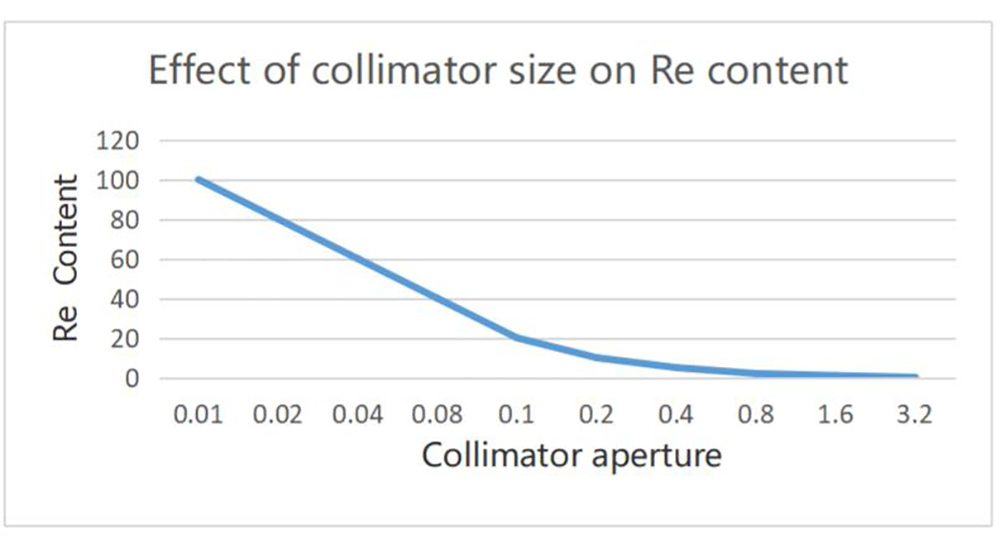
If a small collimator effectively detects Rhenium elements, is it necessary to replace it? The answer is no. Using smaller collimators, such as 0.1 mm * 0.2 mm, can enhance the signal relative strength of the Re element. However, for rhenium with sparse distribution and very small points, it takes longer to scan to the point containing rhenium, which is of little significance, as long as it is within the loss range acceptable to the user, it is actually not necessary to use such a small collimator to detect.
Or course, with a relatively small collimator such as 0.5mm/1.0mm combined with a high-resolution, high-detector-area Fast SDD detector, the effect of Re detection will be even more obvious.
Conclusion:
1.In any case, the user should pay special attention to this impurity material and try not to accept them with black dots; even if you want to collect them, it is better to melt them or cut them for testing, which can reduce the risk significantly.
2.Due to its low resolution, the proportional detector instrument can’t be detected for samples with low rhenium and tungsten content, and its risk is very high. Doing the recovery business are advised to choose high-resolution Si-PIN/Fast SDD detector instruments as far as possible.
3.The characteristic peaks of Re are easily interfered with by gold. Re:La(8.561), Re:Lb(10.01) are easily interfered by Au:Ll(8.493), Au:La(9.713) of gold. If the sample contains Zn, the Zn:Ka(8.631) of Zn will also interfere with Re. Therefore it is tough to identify accurately using ordinary spectrum resolution algorithms.
It is recommended that users preferentially use the instrument of FP algorithm, because the characteristic of FP algorithm spectral solution is full spectrum fitting, which combines spectral solution and calculation into one, only in this way can the spectral shape be accurately decomposed, even if multiple elements cause interference to rhenium, it can still accurately analyze whether there is rhenium.
4.For trace amounts of rhenium, users can assess the loss themselves, because the use of a small collimator to scan the sample surface, although the risk is greatly reduced, but it takes too long.




















